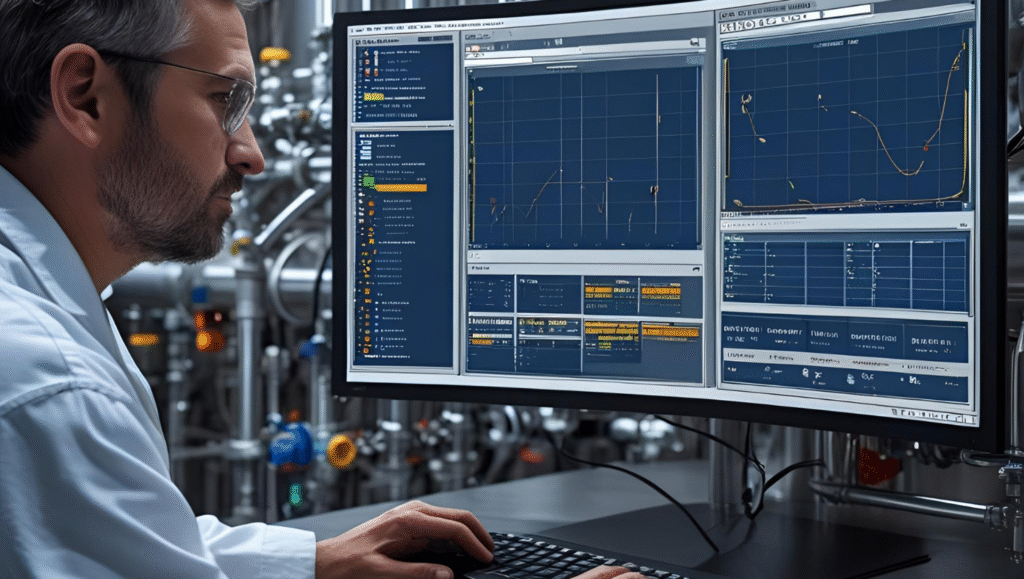✅ Introduction
In the high-stakes world of process industries—whether oil & gas, petrochemicals, or pharmaceuticals—process safety engineers play a pivotal role in safeguarding people, assets, and the environment. As regulatory expectations grow and projects become more complex, leveraging the right software tools is no longer optional—it’s mission-critical.
Whether you’re performing HAZOP studies, conducting SIL assessments, or modeling fire and explosion scenarios, having the right digital tools can dramatically boost your accuracy, productivity, and compliance.
This article lists the Top 10 Software Tools that every process safety engineer should know, use, or master in 2025. These are not just trending names but proven platforms that deliver efficiency, compliance, and real-world safety results.
🏆 1. DNV PHAST – Best for Consequence & Dispersion Modeling
PHAST (Process Hazard Analysis Software Tool) by DNV is the industry gold standard for modeling the consequences of hazardous releases, including:
- Fire
- Explosion
- Gas dispersion
- Jet fires, pool fires, and BLEVE
🔍 Key Features:
- 3D consequence modeling
- Realistic weather and terrain input
- Toxic load & dose calculations
- Integration with GIS maps
Use Case: Risk assessments, layout optimization, emergency planning
Why it’s #1: No serious consequence modeling is complete without PHAST. It remains indispensable for any EPC or operating company handling hazardous materials.
🏆 2. SAFETI – Best for Quantitative Risk Assessment (QRA)
Also from DNV, SAFETI is the premier tool for QRA, helping engineers quantify individual and societal risk over geographical areas.
🔍 Key Features:
- Individual Risk (IR) and Societal Risk (FN curve) outputs
- Risk contour mapping
- Domino effect modeling
- Asset-based risk modeling
Use Case: Land use planning, regulatory submissions, project approvals
Why it’s great: Integrates with PHAST and offers a complete picture of risk with accurate societal and geographical impact.
🏆 3. exSILentia (by exida) – Best for SIL Assessment & Verification
exSILentia is a comprehensive platform for conducting Safety Integrity Level (SIL) studies, including SIL verification and LOPA (Layer of Protection Analysis).
🔍 Key Features:
- Full SIL lifecycle support
- LOPA worksheet automation
- Device failure data library
- SIF (Safety Instrumented Function) performance tracking
Use Case: SIL studies, SIL verification, LOPA, SRS documentation
Why it’s powerful: Automates the most tedious parts of SIL compliance and delivers audit-ready documentation.
🏆 4. PHAWorks RA Edition (by Primatech) – Best for HAZOP & PHA Studies
This modern platform is built to make HAZOP, What-If, FMEA, and other Process Hazard Analysis (PHA) techniques seamless.
🔍 Key Features:
- Node-based risk identification
- Custom templates for HAZOP, What-If, and Checklist
- Risk ranking matrix
- Team collaboration tools
Use Case: HAZOP facilitation, risk register creation, PSSR
Why it stands out: Intuitive, compliant, and widely accepted across industries. A must-have for every safety professional.
🏆 5. SuperChems™ (by ioMosaic) – Best for Reactive & Chemical Hazard Modeling
For complex reactive chemical modeling, SuperChems™ provides a scientific, physics-based platform ideal for advanced users.
🔍 Key Features:
- Thermodynamic modeling
- Chemical reaction and thermal decomposition simulation
- Relief system sizing
- Dust and vapor cloud explosion modeling
Use Case: Chemical reactivity studies, pressure relief design, hazard assessment
Why it’s unique: Offers the most scientific rigor for those dealing with thermally unstable materials.
🏆 6. PIPENET – Best for Transient Flow & Hydraulic Analysis
PIPENET is essential for engineers modeling firewater systems, blowdown, and relief networks under both steady-state and dynamic conditions.
🔍 Key Features:
- Transient module for surge & water hammer
- Firewater ring main design
- Gas and liquid networks
- Pipe stress load outputs
Use Case: Firewater network design, emergency depressurization studies
Why it’s essential: Most widely accepted hydraulic tool for safety-critical networks.
🏆 7. AFT Impulse – Best for Water Hammer & Surge Analysis
While PIPENET leads for general hydraulics, AFT Impulse specializes in transient flow and water hammer simulations, vital in safeguarding pipelines.
🔍 Key Features:
- Surge pressure predictions
- Valve and pump transient modeling
- Animation of fluid behavior
Use Case: Water hammer study, pump start/stop impact analysis
Why it’s valuable: It gives high-detail insights into fluid dynamics that prevent system failure due to surge effects.
🏆 8. BowTieXP (by CGE Risk) – Best for Barrier-Based Risk Management
BowTieXP visualizes risk using the BowTie method, offering a graphical and intuitive approach to mapping causes, consequences, and barriers.
🔍 Key Features:
- BowTie risk diagrams
- Barrier health monitoring
- Audit & compliance linkage
- Human factor analysis
Use Case: Barrier analysis, safety culture training, audit planning
Why it’s gaining ground: Especially powerful for operational teams and safety leadership presentations.
🏆 9. FaultTree+ (by Isograph) – Best for Fault Tree and Event Tree Analysis
This tool is purpose-built for probabilistic risk assessments using fault trees and event trees—ideal for high-integrity systems.
🔍 Key Features:
- Boolean logic-based modeling
- Minimal cut set analysis
- Cost-benefit integration
- Monte Carlo simulation
Use Case: Probabilistic Safety Analysis (PSA), failure mode diagnosis
Why it’s strong: Critical tool for nuclear, aerospace, and high-integrity industrial systems.
🏆 10. Toxic Release (ALOHA/EPA/other open tools) – Best for Emergency Response Scenarios
For quick estimates of toxic gas dispersion or chemical accident scenarios, free tools like ALOHA (EPA) are simple but effective.
🔍 Key Features:
- Source strength estimation
- Toxic gas plume modeling
- Weather and terrain effects
Use Case: Emergency response planning, MSDS study validation
Why it’s still relevant: Lightweight, open-source, and quick to deploy—good for initial screening.
🧠 Final Thoughts
Choosing the right process safety software in 2025 is not about fancy dashboards—it’s about accuracy, compliance, and real-world reliability. With these 10 software tools in your digital toolbox, you’re equipped to handle everything from consequence modeling to SIL verification with confidence and speed.
📌 Summary Table: Quick Comparison
| Software Tool | Best For | Developer |
|---|---|---|
| PHAST | Consequence Modeling | DNV |
| SAFETI | Quantitative Risk Assessment | DNV |
| exSILentia | SIL & LOPA | exida |
| PHAWorks RA Edition | HAZOP, PHA | Primatech |
| SuperChems™ | Chemical Hazard Modeling | ioMosaic |
| PIPENET | Hydraulic & Transient Flow Analysis | Sunrise Systems |
| AFT Impulse | Water Hammer & Surge Analysis | AFT |
| BowTieXP | Barrier Risk Management | CGE Risk |
| FaultTree+ | Fault Tree Analysis | Isograph |
| ALOHA / EPA Tools | Emergency Toxic Release | US EPA |


